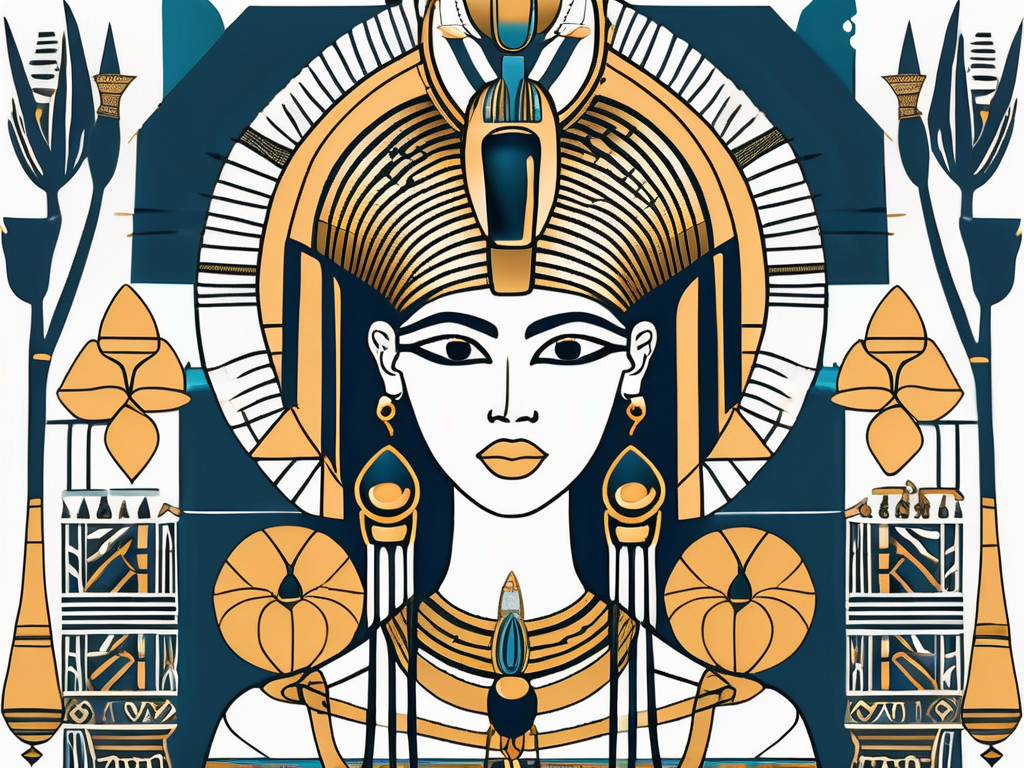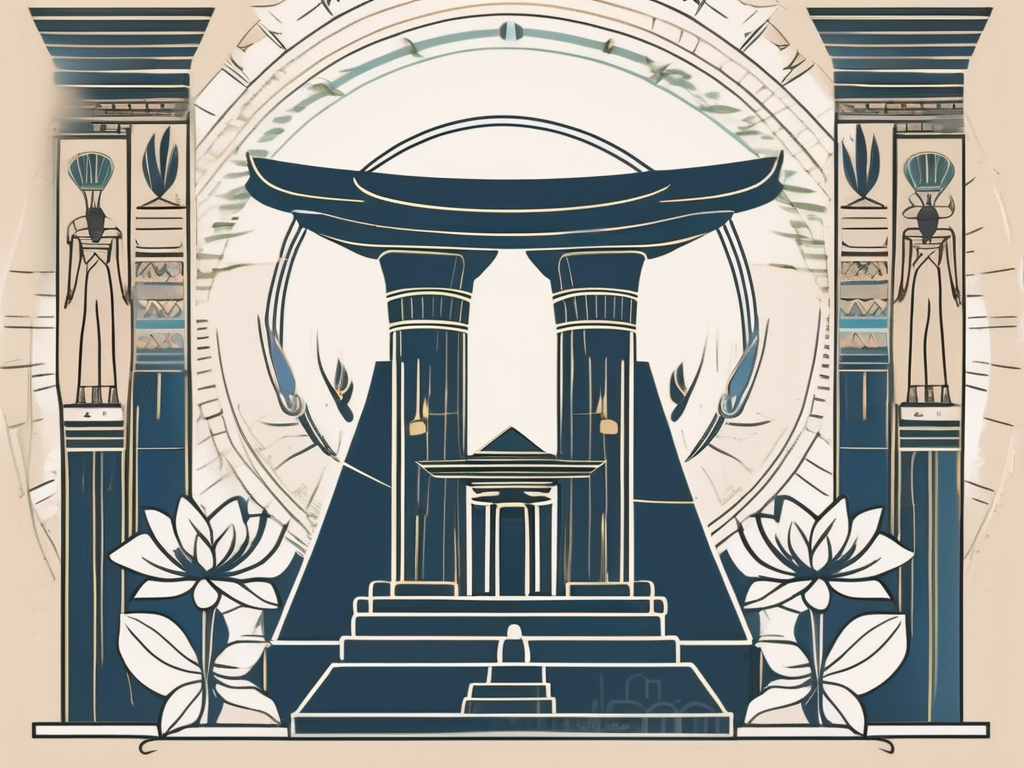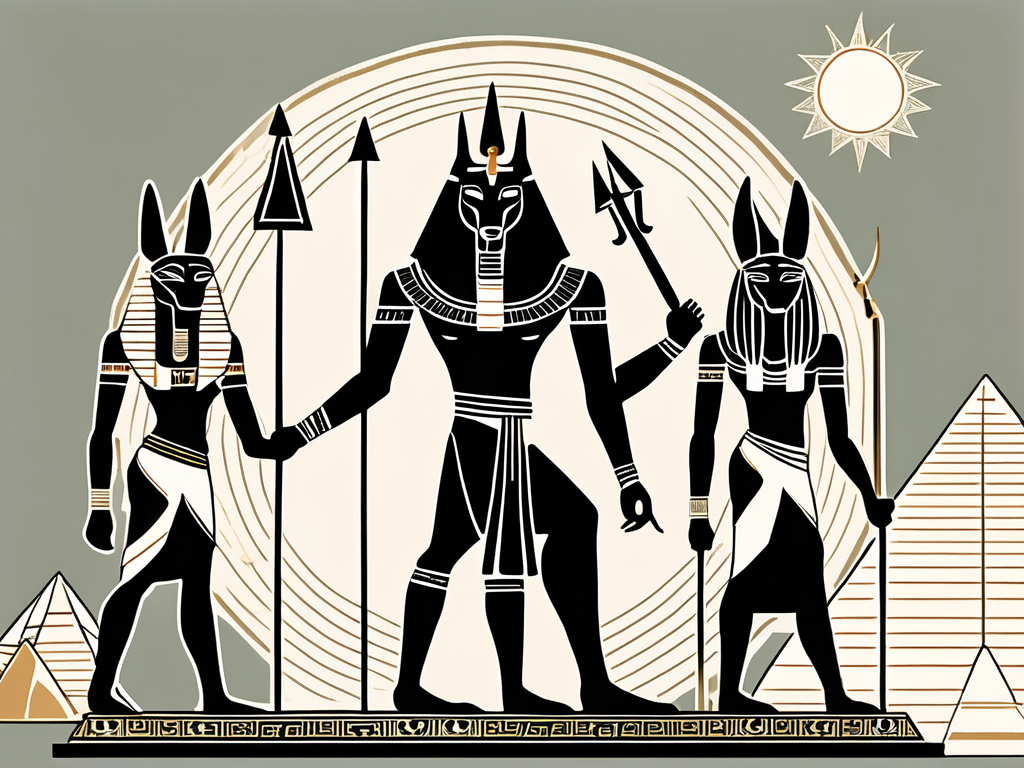The ancient Egyptians revered motherhood as an integral part of their culture, and the goddess who embodied this divine role was highly revered. She represented the nurturing force that brought life into the world. This article explores the significance of the Egyptian goddess of motherhood, examining her role in ancient Egyptian society, her iconography, mythology, and her influence on everyday life. We will also delve into how she is interpreted and worshipped in modern times.
Understanding the Role of Motherhood in Ancient Egyptian Culture
In ancient Egypt, motherhood held immense importance and was considered a sacred duty. The ability to conceive and bear children was highly valued, not only as a means of continuing one’s lineage but also as a way of ensuring the continuity of life itself.
The Importance of Fertility and Procreation
For the ancient Egyptians, fertility and procreation were closely linked to the notion of rebirth. They believed that through the act of reproduction, humans participated in the cycle of creation and renewal. Consequently, motherhood was seen as a divine gift, a conduit through which new life could enter the world.
Ancient Egyptian women, therefore, held fertility in high regard and took various measures to ensure their ability to conceive. They sought the blessings of the goddess Isis, the patroness of motherhood and fertility, and performed rituals and prayers to invoke her favor. Additionally, they believed in the power of amulets and charms, which were worn to enhance their fertility and protect the unborn child.
The Social Status of Mothers in Ancient Egypt
Motherhood bestowed a high social status upon women in ancient Egypt. Being a mother was a mark of honor and respect, and it played a significant role in determining a woman’s place in society. Mothers held a revered position within the family structure and were seen as the moral compass for their children.
Ancient Egyptian society placed great emphasis on the role of mothers in raising children with strong moral values. They believed that a mother’s influence was crucial in shaping the character and behavior of her offspring. As a result, mothers were not only responsible for the physical well-being of their children but also for their moral and ethical development.
Mothers in ancient Egypt were highly regarded for their wisdom and nurturing qualities. They were seen as the primary educators of their children, teaching them essential life skills, religious beliefs, and cultural traditions. Mothers were expected to instill in their children a deep sense of respect for their ancestors and the gods, ensuring the preservation of their cultural heritage.
Furthermore, the role of mothers extended beyond the immediate family. They were often sought after for their advice and guidance in matters of community and society. Their opinions were highly valued, and they were considered trusted advisors and confidants.
In conclusion, motherhood in ancient Egyptian culture was not only a biological function but also a revered and respected role. It held immense significance in the cycle of life and was considered a divine gift. Mothers played a vital role in shaping the moral fabric of society and were seen as the custodians of cultural heritage. Their influence extended beyond the family unit, making them highly regarded members of the community.
The Divine Figure: An In-depth Look at the Egyptian Goddess of Motherhood
The Egyptian goddess of motherhood was a central figure in their pantheon, embodying the nurturing and protective qualities associated with mothers. Let’s explore her iconography, the myths surrounding her, and the significant role she played in ancient Egyptian society.
The Iconography of the Goddess
The goddess of motherhood was often depicted as a woman with a headdress adorned with the hieroglyph for “woman,” emphasizing her role as the ultimate mother figure. This headdress, known as the “atef crown,” was a symbol of her authority and power. It consisted of a tall plumed crown with two ostrich feathers on either side, representing balance and harmony.
Additionally, the goddess was frequently portrayed wearing a vulture headdress, known as the “nemes crown,” which symbolized her protective nature. The vulture was believed to be a fierce and vigilant creature, guarding her children from harm.
In some depictions, the goddess of motherhood was shown breastfeeding her child, symbolizing nourishment and care. This imagery emphasized her role as the provider of life and sustenance. It also highlighted the importance of motherhood in Egyptian society, where the act of breastfeeding was seen as a sacred duty.
The Mythology Surrounding the Goddess
According to ancient Egyptian mythology, the goddess of motherhood played a pivotal role in the creation of the world. It was believed that she had the power to bring forth life and provide protection to both mothers and children. Her name, which varied depending on the region, was often associated with the concept of birth and fertility.
One of the most famous myths surrounding the goddess is the story of her own birth. It was said that she emerged from the primeval waters of Nun, the chaotic and formless void that existed before creation. As she rose from the waters, she brought order and stability to the world, becoming the divine mother figure who nurtured all living beings.
In another myth, the goddess of motherhood was believed to be the wife of the sun god Ra. Together, they were responsible for the creation of all life on earth. It was believed that Ra would travel across the sky during the day, while the goddess would protect and nourish the earth, ensuring its fertility and abundance.
The goddess of motherhood was highly revered in ancient Egyptian society. Her role extended beyond the realm of mythology and into the daily lives of the people. She was often invoked during childbirth to ensure a safe delivery, and mothers would make offerings to her in gratitude for her protection and guidance.
In conclusion, the Egyptian goddess of motherhood was a powerful and influential figure in their pantheon. Through her iconography and the myths surrounding her, she represented the nurturing and protective qualities associated with mothers. Her role in the creation of the world and her significance in ancient Egyptian society made her a central figure in their religious and cultural beliefs.
The Goddess’s Influence on Everyday Life in Ancient Egypt
The goddess of motherhood had a significant impact on various aspects of everyday life in ancient Egypt, ranging from rituals and ceremonies to her role as a protective figure.
Rituals and Ceremonies Dedicated to the Goddess
Throughout the year, the ancient Egyptians performed rituals and ceremonies to honor the goddess of motherhood. These ceremonies were not just simple gestures, but elaborate and intricate affairs that involved the entire community. The preparations for these events would begin weeks in advance, with the gathering of offerings and the construction of beautifully adorned altars.
On the day of the ceremony, the air would be filled with a sense of anticipation and reverence. The people would gather at the temple dedicated to the goddess, their hearts filled with hope and gratitude. The priests, dressed in their finest robes, would lead the congregation in prayers and chants, invoking the goddess’s blessings upon the community.
The offerings made during these rituals were carefully chosen to symbolize the fertility and abundance that the goddess represented. Fruits, grains, and flowers were presented in abundance, along with precious jewels and artifacts. These offerings were believed to please the goddess and ensure her favor, thus guaranteeing the prosperity and well-being of the community.
The Goddess as a Protective Figure
The goddess of motherhood was not only revered for her association with fertility and childbirth but also for her role as a protective figure. She was believed to watch over women and children, shielding them from harm and guiding them towards a prosperous and fulfilling life.
In times of trouble or uncertainty, families would turn to the goddess for guidance and protection. They would seek her intercession through prayers and offerings, believing that she had the power to ward off evil and bring blessings into their lives. Mothers would often place small statues or amulets of the goddess in their homes, hoping that her presence would create a safe and nurturing environment for their children.
It was not just women and children who sought the goddess’s protection. Men, too, would invoke her name in times of war or danger, believing that her divine influence could shield them from harm. Warriors would wear amulets bearing her likeness, carrying with them a symbol of her strength and protection as they went into battle.
The goddess’s influence extended beyond the individual level. She was seen as a guardian of the community, ensuring the well-being of all its members. In times of drought or famine, the people would come together to perform rituals and ceremonies, beseeching the goddess to bring rain and abundance to their land. They believed that her favor was essential for the survival and prosperity of their society.
In conclusion, the goddess of motherhood played a vital role in ancient Egyptian society. Her influence permeated every aspect of everyday life, from the rituals and ceremonies dedicated to her to her role as a protective figure. The ancient Egyptians held her in high regard, seeking her blessings and guidance in their quest for fertility, prosperity, and well-being.
The Goddess in Modern Interpretations and Beliefs
The sense of awe and reverence for the goddess of motherhood continues to be celebrated in contemporary times, albeit in different forms.
The Goddess in Contemporary Paganism
In modern Pagan traditions, the worship of the goddess of motherhood has found a place. Some practitioners draw inspiration from ancient Egyptian beliefs and rituals, incorporating her into their spiritual practices. She represents the eternal cycle of life and is seen as a symbol of empowerment for women.
The Goddess in Modern Art and Literature
Artists and writers have been captivated by the enchanting figure of the Egyptian goddess of motherhood. Her timeless appeal has been depicted through various mediums, from paintings to sculptures, and her stories have been woven into modern literature. Through these artistic expressions, her significance as a nurturing force and a reminder of the power of motherhood continues to resonate.
In conclusion, the Egyptian goddess of motherhood played a fundamental role in ancient Egyptian culture. She symbolized the essence of motherhood, fertility, and protection, and her influence extended to rituals, ceremonies, and everyday life. In modern times, she continues to inspire reverence and awe, capturing the imagination of both practitioners of ancient religions and artists alike.












